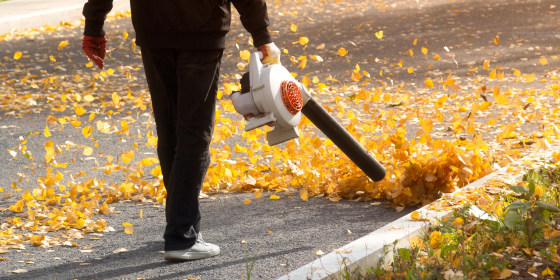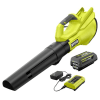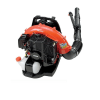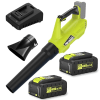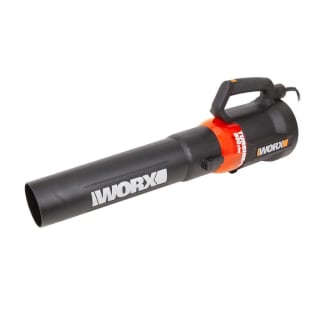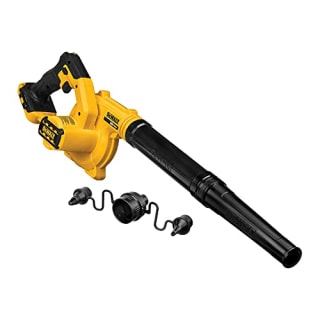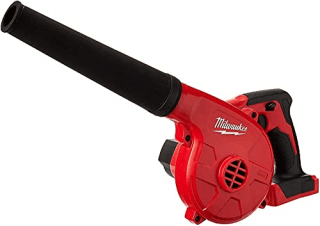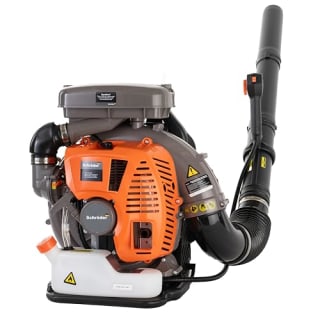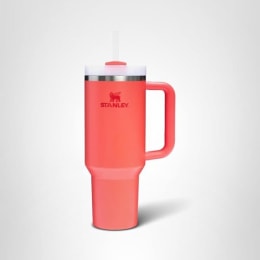Fall foliage is nice. Piles of dead leaves in your yard? Less so. Raking may feel nostalgic, but it’s a serious workout — and there’s a faster way to clean up your lawn: a leaf blower.
Like gardening gloves or pruning shears, leaf blowers are tools worth investing in. Whether you’re clearing your driveway, tidying up after mowing or getting leaves off your roof, the right model can make a big difference. We talked to lawn care and landscaping experts to help you find the best one — whether you’re looking for a quiet electric blower or a powerful gas model for big yards.
How we picked the best leaf blowers
We asked landscaping experts what you should remember when shopping to help you find the best leaf blower to suit your needs.
- Price: Candidly, leaf blowers can be an investment — the prices generally range anywhere from $75 to well over $200 for an electric leaf blower, $150 to $300 for a handheld gas blower and $250 to upwards of $700 for a backpack blower. The experts we spoke with agreed you really shouldn’t go lower than $75, as the power will likely not be strong enough to do much of anything.
- Electric or gas: Leaf blowers are either electric (aka battery-operated) or powered by gas. “Electric blowers are lighter, quieter, and easier to maintain. The tradeoff is that a cord limits your range and batteries only run so long,” according to Joe Bailey, owner of Lawn & Order Landscaping. “In my experience, gas blowers give you more power and unlimited run time as long as you have the fuel. But they are louder and require a bit more maintenance.” For most homeowners with average-sized yards, our experts agreed that an electric model will be most cost-effective and easier to use. We included electric leaf blowers, better for smaller spaces, and gas leaf blowers, which can typically handle larger lawns.
- Power and speed rating: Most leaf blowers list the machine’s cubic feet per minute (CFM) and miles per hour (MPH). “CFM is how much air the blower moves, and MPH is how fast it moves it,” according to Bailey. “A good balance of both is what makes it effective.”The higher a leaf blower’s CFM, the more leaves, debris and other material the leaf blower pushes around. The MPH measures the speed at which air comes from the unit’s nozzle. The higher it goes, the faster the material can be pushed away. Generally, if you hope to get a more powerful leaf blower to clean up larger areas, a machine with a high MPH and a high CFM will be the most efficient option.
7 best leaf blowers for fall cleanup
We used the guidance provided by experts to round up top-rated options across multiple retailers like Amazon and Home Depot. We also included specific models they use or recommend. The following leaf blowers include standout features experts told us to look for.
This popular leaf blower from Ryobi has a 4.7-star average rating from 2,811 reviews at Home Depot. It has 40 volts of power, a runtime of 75 minutes, a brushless motor and it includes the battery and charger, which is compatible with several other Ryobi products. It has a 5-year manufacturer’s warranty, a 3-year manufacturer’s battery warranty and it weighs less than 10 pounds.
The Worx blower includes an attachable “Hyper-Stream” air nozzle that directs the airflow where you need it and a cord lock that prevents your extension cord from getting disconnected when snagged. The machine weighs 6.6 pounds, which is slightly heavier than other electric models on our list. Carmen De Vito, founder of garden and landscape design company Garden Cult, said she likes Worx due to the rechargeable battery’s compatibility with the brand’s other offerings. It has a 4.9-star average rating from 246 reviews at Home Depot.
This backpack option has a 4.7-star average rating from 4,500 reviews at Home Depot. It has several features for professional-grade use: Among other things, it sports a leaf guard to prevent overheating if leaves or debris block the blower intake, a vented back pad for hot weather and a padded backrest and shoulder pads for comfort. It also comes with a five-year consumer and two-year commercial warranty. This leaf blower has a two-stroke cycle engine that requires a 50:1 ratio of fuel to oil mix (about 128 ounces of gasoline to 2.6 ounces of oil), according to the brand. It recommends using only fresh gas with a minimum octane rating of 89 or higher (mid-grade to premium) at all times.
This cordless leaf blower is an affordable option that can be useful for at-home yard work and light-duty landscaping. It has a power rating of 380 maximum CFM and 100 maximum MPH and a rechargeable battery. The brand states that the fully charged battery can typically provide only 40 minutes of run time, which may not be enough for larger yards. The unit weighs about 4 pounds and has a hanging hook for convenient storage and a variable speed trigger that lets you control the airflow.
This electric leaf blower weighs 2.5 pounds, making it the most lightweight and compact option. Due to its smaller size and relatively weaker strength — it has a maximum CFM of 100 and a maximum MPH of 135 — this unit is best for small spaces and very light-duty jobs, such as removing dust and debris from a countertop or workspace. The variable speed trigger allows you to control how much air comes out of the machine, while the compact design lets you utilize it in small, constrained areas and conveniently store it around your house. However, remember that the battery and charger are sold separately. It has a 4.4-star average rating from 14,612 reviews on Amazon.
A 3-speed electric switch controls this leaf blower and has a lock-on feature that lets you take your finger off the trigger and have the machine still blow. It is an ultra-compact model, measuring about 14 inches in length, so best for smaller jobs and those who do not have a lot of storage for tools. The 9-inch nozzle is made of a soft plastic to reduce the risk of cracking and the handle of this blower has an ergonomic design to prevent dropping, according to the brand. It has a 4.5-star average rating from over 1,305 reviews on Amazon. One thing to know: This leaf blower is compatible with Milwaukee’s M18 lithium-ion battery, which is sold separately and comes with both the battery and charger.
Another backpack option, this gas leaf blower weighs in at just under 20 pounds. It has padded shoulder straps and back support for comfort. It is designed to withstand harsh weather and has an adjustable dial and ergonomic trigger to add comfort when wearing it for long periods, according to the brand. This leaf blower has a gas tank that holds up to 1.9 liters of gasoline and the machine has a 4.4-star average rating from over 2,800 reviews on Amazon.
How to shop for a leaf blower
Decide between a handheld or backpack leaf blower
Beyond gas and electric models, there are several other things to consider when determining what type of leaf blower will work for you. One of the more important factors to consider? How you carry it. The most popular types of leaf blowers are handheld and backpack blowers, says De Vito. Handheld models allow you to physically hold the machine while operating it, while backpack leaf blowers let you use your shoulders and back to support the weight rather than your arms and wrist. Handheld devices are good for at-home use, while backpack leaf blowers are the most commonly used for professional use, according to the experts we consulted.
Gas-powered backpack blowers are usually more powerful than handheld units, but they tend to be bulkier, heavier and more expensive, according to Bailey. They’re better for larger landscaping tasks, while handheld units are “easy to grab for small cleanups,” he says. They can also be used for other tasks, like snow removal in the winter.
Meet our experts
At NBC Select, we work with experts with specialized knowledge and authority based on relevant training and/or experience. We also ensure all expert advice and recommendations are made independently and without undisclosed financial conflicts of interest.
- Joe Bailey is the owner of Lawn & Order Landscaping.
- Carmen De Vito is the founder of the garden and landscape design company Garden Cult.
Why trust NBC Select?
Mili Godio is an editor at NBC Select who covers a variety of home and kitchen products, including space heaters, washable rugs and laundry stain removers.
Bethany Heitman is a contributor at NBC Select and a journalist who regularly covers beauty, home and lifestyle.
Cory Fernandez is a commerce editor at NBC Select.
Catch up on NBC Select’s in-depth coverage of tech and tools, wellness and more, and follow us on Facebook, Instagram, Twitter and TikTok to stay up to date.



